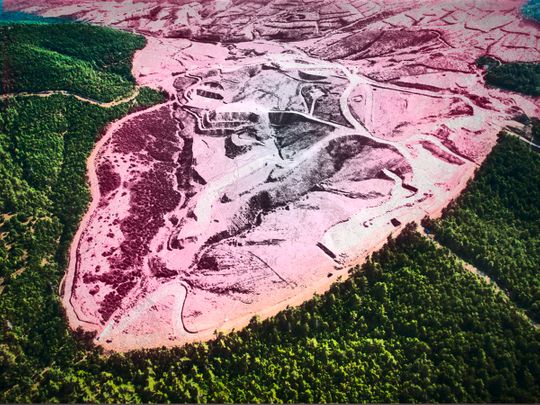
In November 2021, at the United Nations Climate Change Conference (COP 26), 141 countries signed the Glasgow Leader’s Declaration on Forests and Land Use. There they had committed themselves not only to halt but also to reverse forest loss by 2030.
Despite the commitment, this year’s Global Forest Watch report says that the world’s forests are disappearing alarmingly. In 2021 alone, the world has lost an area of tropical primary forests equal to the size of the Netherlands.
The total forest area of the world at present is around 4 billion hectares. Though there are 5000 square meters of forests per capita, the forest is not equally distributed among countries or regions.
Half of the world’s total forests are in five countries only: Russia, Brazil, Canada, the US, and China. If another five countries, Australia, DRC, Indonesia, Peru, and India, are added to the list, the share of these ten countries goes up to 66 per cent of the world’s forest.
Thankfully, the global deforestation rate has somewhat reduced due to various measures in recent years. The rate of deforestation was estimated to be 10 million hectares per year between 2015 and 2020, compared to 16 million hectares annually in the 1990s.
Moreover, almost 700 million hectares of the world’s forest have been legally protected, being declared as national parks, conservation areas, or game reserves.
Alarmingly high rates
Though the deforestation rate has declined in some countries, it remains alarmingly high in many parts of the world. The world has already lost 420 million hectares of forest in the last three decades, particularly in countries like Brazil, DRC, Indonesia, Angola, Tanzania, Paraguay, and Myanmar. Forests are being cut, burnt, or degraded frighteningly in most of the global South.
The Amazon has lost almost 17% of its green cover in the last fifty years, primarily to cattle ranching. The tropics continue to lose tree covers of the size of 30 soccer fields every minute.
Forest ecosystems constitute a significant part of world’s biodiversity. Forests are not just trees but contain many plants, animals, and microorganisms. More than 20,000 tree species are included in the IUCN Red List of Threatened Species out of around 60,000 available tree species.
Forests provide jobs directly to 86 million people and support the livelihood of many more. Nearly 880 million people collect firewood from the forests.
More than 90 per cent of people living in extreme poverty earn at least part of their source of living from the forests, and many of them are indigenous people. In total, 1.25 billion people worldwide depend on forests for shelter, survival, water, fuel, and food security.
Deforestation unsettles water cycles, leads to soil erosion, increases the intensity of flooding, and disrupts the lives of millions of people.
Planet’s survival at stake
Moreover, the planet’s survival is itself at stake now due to climate change, and deforestation contributes significantly to accelerating the climate change process. Clearing the forest releases carbon that the trees have stored.
Tropical forests have stored 228 to 247 gigatons of carbon dioxide, more than seven times the carbon dioxide emitted annually due to human activities.
The removal of these green covers reduces the carbon sink of the planet. Deforestation and degradation of forests contribute to almost 15 per cent of all greenhouse gas emissions.
Besides releasing carbon into the atmosphere, deforestation also impacts physical processes in the local climate. A recent study has found that the average hottest day of the year in Asia, Europe, and North America has become more intense due to large-scale deforestation.
For those regions, which have lost 15 per cent of their forest cover since the start of the industrial revolution, the deforestation accounts for one-third of the increase in daily temperatures.
There is no doubt that the world has a severe deforestation problem at hand. Growing population and increasing demand for food, fuel, and land have led to the massive destruction of forest areas. In the years of the pandemic, despite a shrinking global economy, deforestation increased worldwide.
Significant loss of forest cover
While the primary tropical forests were mostly deforested, in the temperate regions, the significant loss of forests was due to unprecedented fires. In California alone, 1.6 million hectares of forests burnt down in 2020.
On this year’s Earth Day — April 22 — President Joe Biden signed an Executive Order to protect America’s forests, enhance resilience from wildfires and other extreme weather events, and combat global deforestation.
However, even if there is a forceful American intervention in protecting global forests, it might not be successful as the world is facing an unprecedented food crisis due to the war in Ukraine. To meet the food grain scarcity, many countries are bound to engage in expanding their farming activities.
Agricultural expansion has historically been the main driver of deforestation. It continues to be a major reason of forest degradation. The ongoing food crisis has created further incentives for countries to convert more forest areas to farmland and ranch land.
Once a forest becomes agricultural land, reforestation of that land rarely happens. Unfortunately, while the world badly needs its forests to meet the climate crisis, countries in the global South have few options except to clear more forest areas to grow more food.









